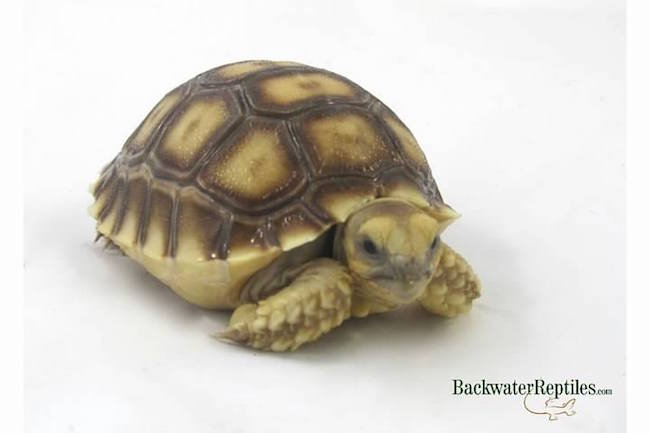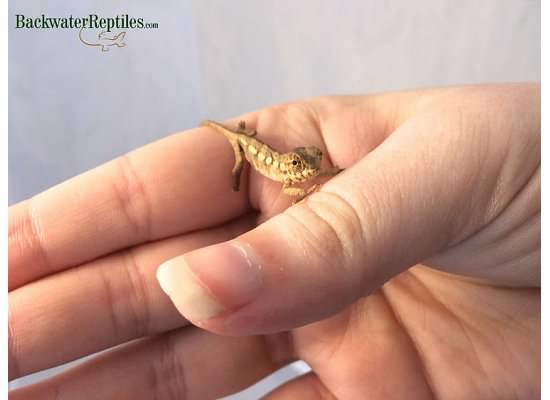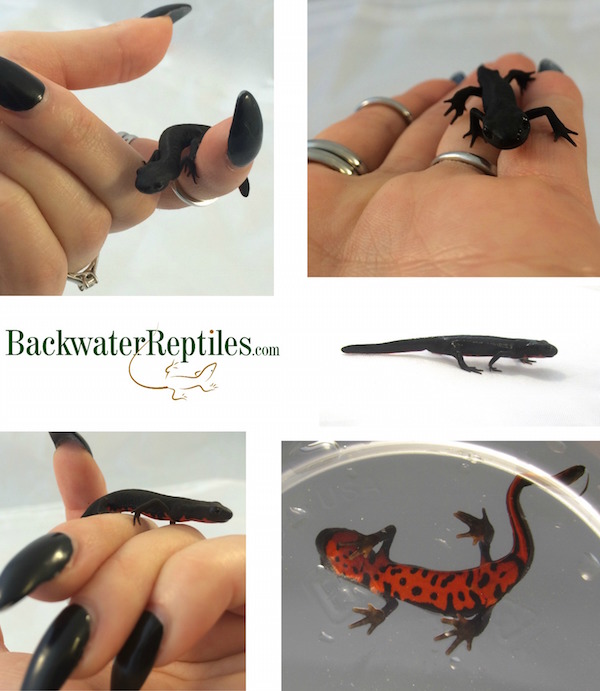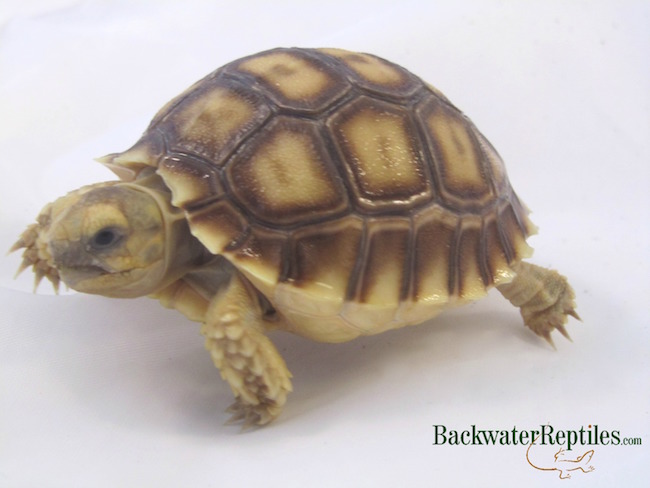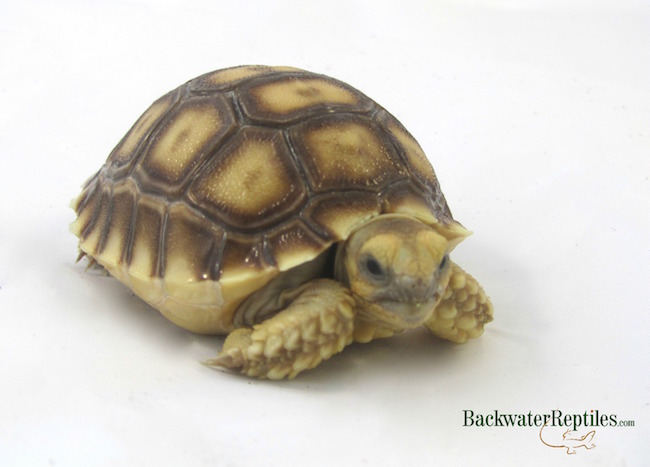If you like reptiles but get squeamish feeding your pet anything living such as crickets, mice, or worms, why not choose a pet reptile that is herbivorous?
Backwater Reptiles sells many herbivores, but this blog article will list our top three favorites that we think make the best overall pets.
Green Iguana (Iguana iguana)
Possibly the most well-known lizard on this list, the green iguana is an ideal vegetarian pet, so long as you are committed to caring for an animal that will grow quite large. In fact, a mature green iguana can reach up to seven feet long and can weigh around twenty pounds! They grow into quite hefty lizards.
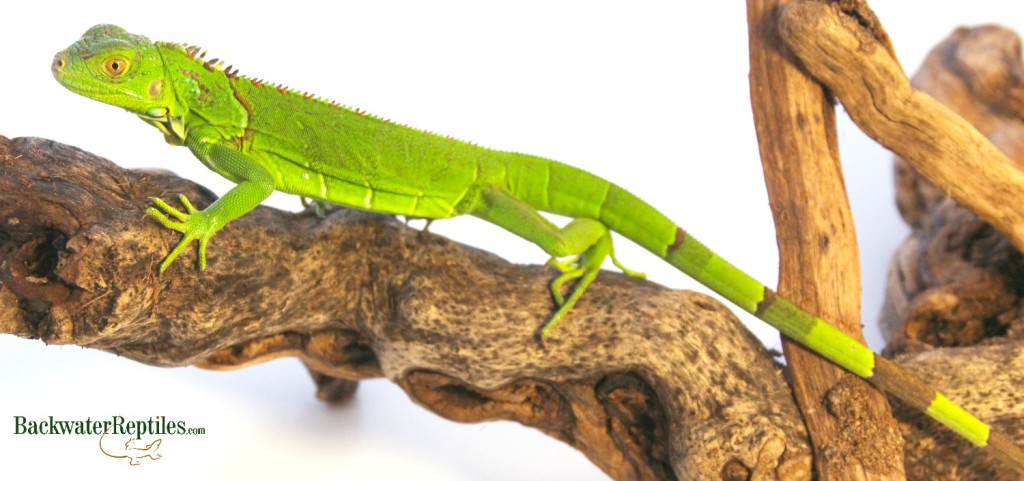
Many people are attracted to green iguanas because of their prehistoric appearance. The spines along their backs and tail coupled with their large throat dewlaps make them resemble dinosaurs.
Young green iguanas and adult green iguanas will have essentially the same diet of fresh veggies and fruit, however the young iguanas will need vitamin supplements more frequently and will need to be fed more often.
Green iguanas should have a diet rich in green, leafy veggies and fruit can be supplemented as well. We don’t recommend a diet that consists of more than ten percent fruit as this can give your iguana diarrhea. Offering fruit once per week is usually just about the proper amount.
Vegetables that are healthy and nutritious for a green iguana include kale, collard greens, spinach, green beans, dandelions, and squash. However, this list is by no means all inclusive.
There are also many pre-prepared iguana foods and supplements that can be purchased from breeders or pet stores. As with any reptile, the key to health is a varied diet. No one, including our pet reptiles, enjoys eating the same food every day.
Backwater Reptiles sells green iguanas of various sizes.
Blue Tongue Skink (Tiliqua sp.)
It’s not necessarily 100 percent accurate to label blue tongue skinks as vegetarians or herbivores because they do actually need meat protein in their diet. However, because this need can be met by purchasing human meat products from the store and feeding your blue tongue skink live invertebrates is not necessary, we have included it on our list.
Blue tongue skinks are known by reptile enthusiasts as “blueys” due to their thick, flat, blue tongues. They are also visually appealing as pets because they are stocky with very small limbs. They resemble lizard sausages and we find this to be a very endearing trait.

At Backwater Reptiles, we feed our blue tongue skinks vegetables chopped into pieces small enough to comfortably fit inside the bluey’s mouth. Obviously, this size will vary from animal to animal, but just use your best judgment when cutting up leafy greens and other crisper veggies.
You can also give your bluey fruit and meat in moderation, but moderation is the key word. Like green iguanas, blue tongue skinks will get upset tummies if they eat too much fruit. Too much protein will also cause renal failure, so give canned meats and boiled meats occasionally.
If you are ready to invest in a pet blue tongue skink of your own, Backwater Reptiles has got you covered!
Sulcata Tortoise (Geochelone sulcata)
Sulcatas are very long-lived and friendly animals. They make excellent backyard pets and great classroom pets too when they are small enough to live in an indoor enclosure. Many people enjoy purchasing a hatchling and watching it mature into a tortoise that can eventually weigh approximately a hundred pounds.
Because their staple food is grasses and leaves in the wild, it is acceptable to allow your sulcata to graze on the vegetation that grows naturally in your backyard, so long as you are sure you don’t propogate poisonous plants in your yard.
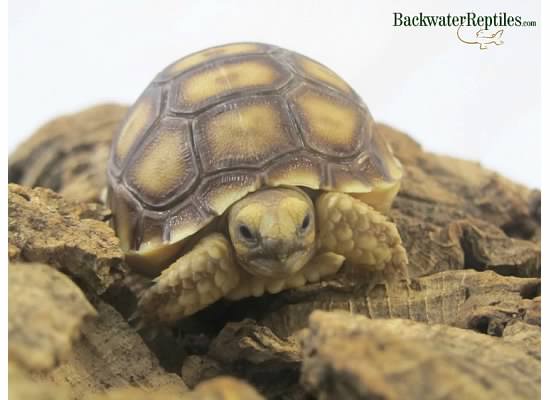
Indoor sulcatas enjoy eating and will usually eagerly consume whatever vegetation you throw their way. We feed ours spring salad mixes purchased from the grocery store. These pre-mixed packages tend to have a good variety of leafy greens that sulcatas enjoy.
Many people have found that sulcata tortoises thoroughly enjoy munching on cactus pads. Commercially made tortoise chow also works well to supplement their diet, although we don’t recommend sticking strictly to the pre-made food as freshly prepared meals are always better for your reptile’s health.
Captive bred sulcata tortoise hatchlings are available from Backwater Reptiles.
Conclusion – Vegetarian Reptiles
Many people don’t realize that not all reptiles eat bugs and other traditionally “yucky” food items. We hope our list has helped you see that vegetarian pet reptiles are certainly an option and make equally rewarding companion animals as their carnivorous friends.



